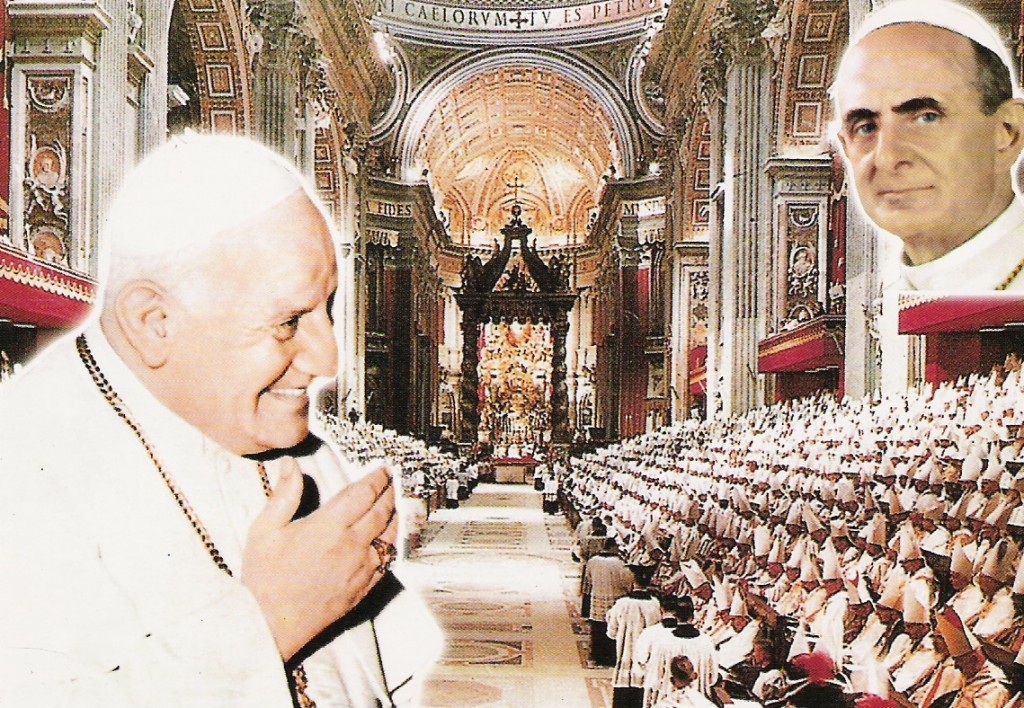
The propositions and proposals set forth in the conciliar text run the gamut – from the clear cut to the contradictory, the blatantly erroneous to the deliberately confusing.
How does one go about deciphering their true meaning and thus the Council’s vision for the Church moving forward?
The answer famously given by Benedict XVI is the “hermeneutic of continuity,” in this case, continuity with tradition. In other words, it means reading and interpreting the conciliar text in the light of all that proceeded it, with the assumption being that the two are entirely compatible.
Proponents of this approach are often forced to admit that the popes of the Council and its aftermath have often misapplied the Council’s true intent, e.g., as it concerns ecumenism, relations with the Jews, and even the liturgical reform.
This raises a question that few in the continuity crowd seem willing to ponder:
If the Holy Roman Pontiff cannot be trusted to implement an ecumenical council correctly, who can? After all, have not John XXIII, Paul VI, John Paul II, Benedict XVI, and Francis – via their magisterium, actions, allocutions, interviews, etc. – been providing an authentic interpretation of the Council for some six decades now?
In any case, the hermeneutic of continuity requires one to force square conciliar pegs into round traditional holes. At times, commitment to this interpretive key compels one to twist and to bend the conciliar text to the point where it is barely recognizable, its most natural reading unceremoniously sacrificed in order to support a traditional interpretation.
That task, as more and more are coming to discover, is absolutely impossible simply because the premise amounts to a denial of objective reality.
So, if not the hermeneutic of continuity, then what?
Well, for one thing, I would suggest that life in the conciliar church – in its parishes and dioceses, its conferences and synods – whether experienced firsthand or simply observed, is a snapshot in time of the Council and its vision authentically interpreted.
Still unsure how best to interpret the conciliar text, or perhaps better stated, to decipher the intent of the powerful minority of modernist bishops that served as the Council’s architects?
I propose that the only way to ascertain the Council’s vision for the Church moving forward is to employ what I call the hermeneutic of cohesion. This means viewing the conciliar text as a cohesive whole, seeking to understand the gravity of the conciliar program by examining each of the sixteen documents in the light of the others.
The Council itself suggests just such an approach. For instance, in the Pastoral Constitution on the Church in the Modern World, Gaudium et Spes, we find:
In this chapter, [Part I – Chapter IV] presupposing everything which has already been said by this council concerning the mystery of the Church, we must now consider this same Church inasmuch as she exists in the world, living and acting with it” (GS 40).
In other words, the reader is being informed that one will be hard pressed to understand the Council’s vision as expressed in Gaudium et Spes unless it is read in the light of Lumen Gentium, a text that is cited in the footnotes more than a dozen times. This same document, GS, cites four other conciliar documents in its footnotes as well.
Yes, Gaudium et Spes was among the last of the conciliar texts to be promulgated, but to focus on chronological order is to miss the point:
Note very well that the Council is pointing, not to the Church’s traditional ecclesiology as expressed over the course of nearly 2,000 years, but rather to Lumen Gentium as the foundation for grasping the vision it expresses in Gaudium et Spes.
The lesson in this is simple: Just as one might expect for an exercise in novelty, Vatican Council II serves as its own best interpretive key.
To my mind, it is clear that the hermeneutic of cohesion is the only approach capable of revealing Vatican Council II for what it truly is, a well-ordered plan to establish a new religion, one that glorifies man as its “center and crown” (cf GS 12).
On Monday (God willing) I will post a somewhat lengthy review of the Constitution on the Sacred Liturgy of Vatican II, making use of the hermeneutic of cohesion, that will reveal the extent to which the Novus Ordo Missae, far from being at odds with the Council, is a concrete manifestation of its vision.
